
| SPIDERS |
|
Although spiders might seem to be a different but equal category to insects, this is not the case. The class Insecta encompasses a large number of orders, all of which are insects (such as flies, beetles, etc.). The class Arachnida, on the other hand, includes a number of orders, such as scorpions, mites, and harvestmen. Only one order, Araneae, contains the spiders. Clear as mud, no? Even if the technical categories are a bit confusing, the differences between spiders and insects are clear cut, and an essential bit of knowledge that anybody working on identification of small critters must know. These are the basics: Spiders have 8 legs and 2 body parts; insects have 6 legs and 3 body parts. The "head" of a spider is called the cephalothorax. While insects have 2 compound eyes and 3 ocelli (little light-gathering organs on the top of their head), spiders usually have 8 eyes, but some have only 6. The face of a spider bears chelicerae with fangs and pedipalps, which look like small legs. Insects have antennae and mandibles on their faces. Almost all spiders have venom and it comes out of the fangs. Those insects that have venom deliver it from the rear end, by means of a stinger. All spiders can produce silk, which comes out of spinnerets at their rear. Only a few insects, such as caterpillars, produce silk; it comes out of the mouth, or, in the case of webspinners, out of the front legs. Spiders never have wings, while insects frequently possess one or two pairs. All spiders are predatory, and most of their prey consists of insects. They will, however, eat whatever they can catch, including all other terrestrial arthropods, lizards, and even small birds. While all spiders can make silk, they do not all make webs. Some use silk only for protecting their eggs, or for making a small retreat in which to sleep. Others make elaborate webs in order to trap food. When identifying a spider, the first step is to figure out which family it belongs to. Sometimes this is very easy and other times it can be quite a challenge. After the family level, it might be possible to get to genus and even species. Although some spiders are large, many are quite small and seeing enough detail to identify them can be tricky. Many clues, such as behavior, habitat, and web characteristics are useful in identifying spiders.
|
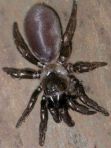 Cyrtaucheniidae [trapdoor spiders] |
 Theraphosidae [tarantulas] |
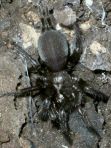 Dipluridae [funnelweb weavers] |
 Filistatidae [crevice weavers] |
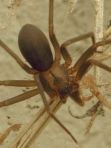 Sicariidae [brown spiders] |
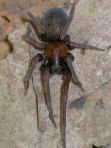 Amaurobiidae [hackledmesh weavers] |
 Pholcidae [cellar spiders] |
 Scytodidae [spitting spiders] |
 Linyphiidae [sheetweb weavers] |
 Theridiidae [cobweb weavers] |
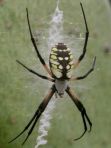 Araneidae [orbweavers] |
 Tetragnathidae [longjawed orbweavers] |
 Uloboridae [hackled orbweavers] |
 Mimetidae [pirate spiders] |
 Oxyopidae [lynx spiders] |
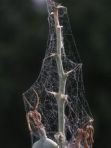 Dictynidae [meshweb weavers] |
 Agelenidae [funnel weavers] |
 Lycosidae [wolf spiders] |
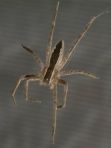 Pisauridae [nursery web spiders] |
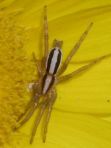 Gnaphosidae [ground spiders] |
 Corinnidae [antmimic spiders] |
 Philodromidae [running crab spiders] |
 Clubionidae [sac spiders] |
 Anyphaenidae [ghost spiders] |
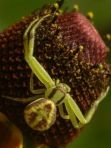 Thomisidae [crab spiders] |
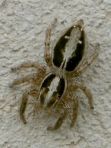 Salticidae [jumping spiders] |
![]()